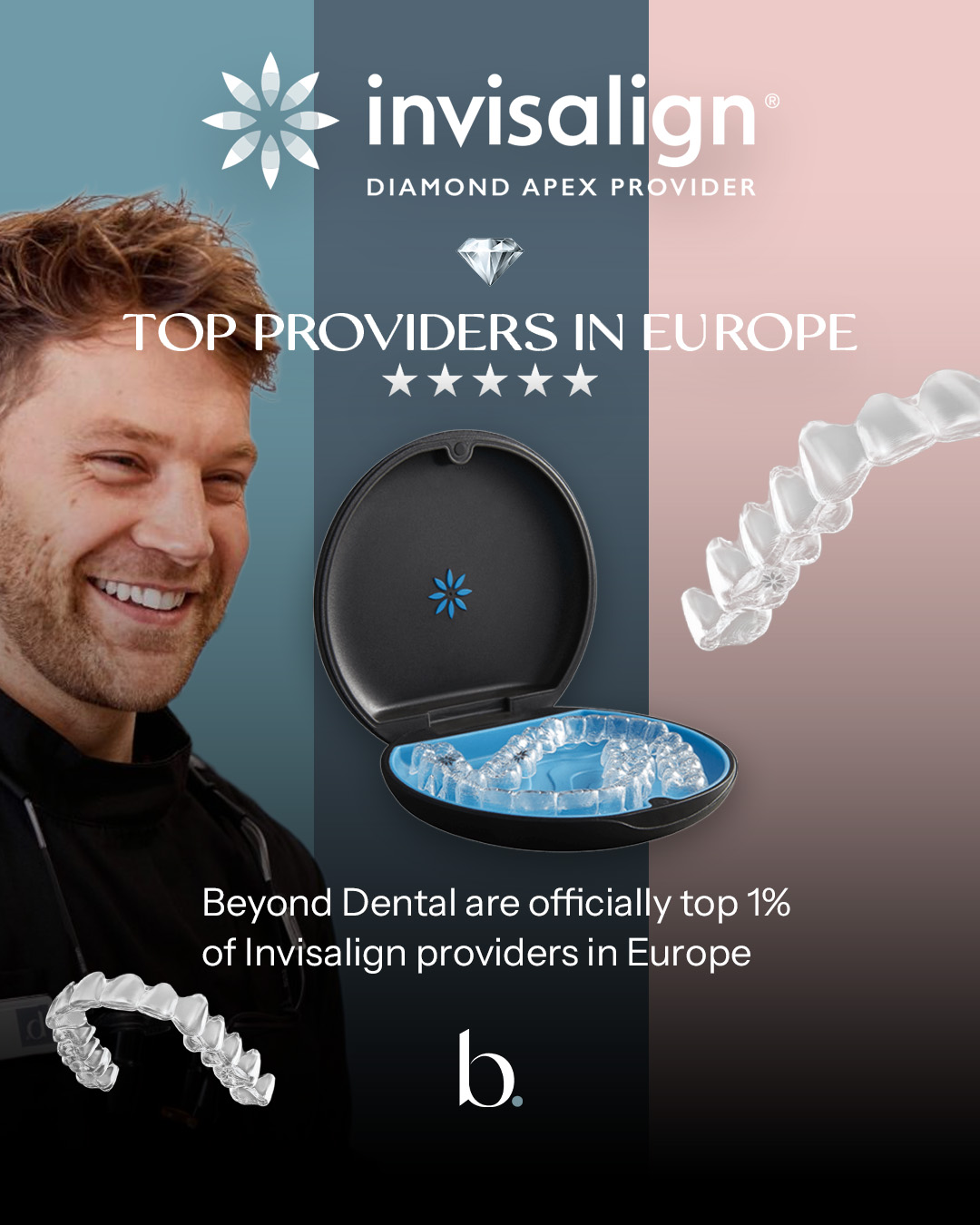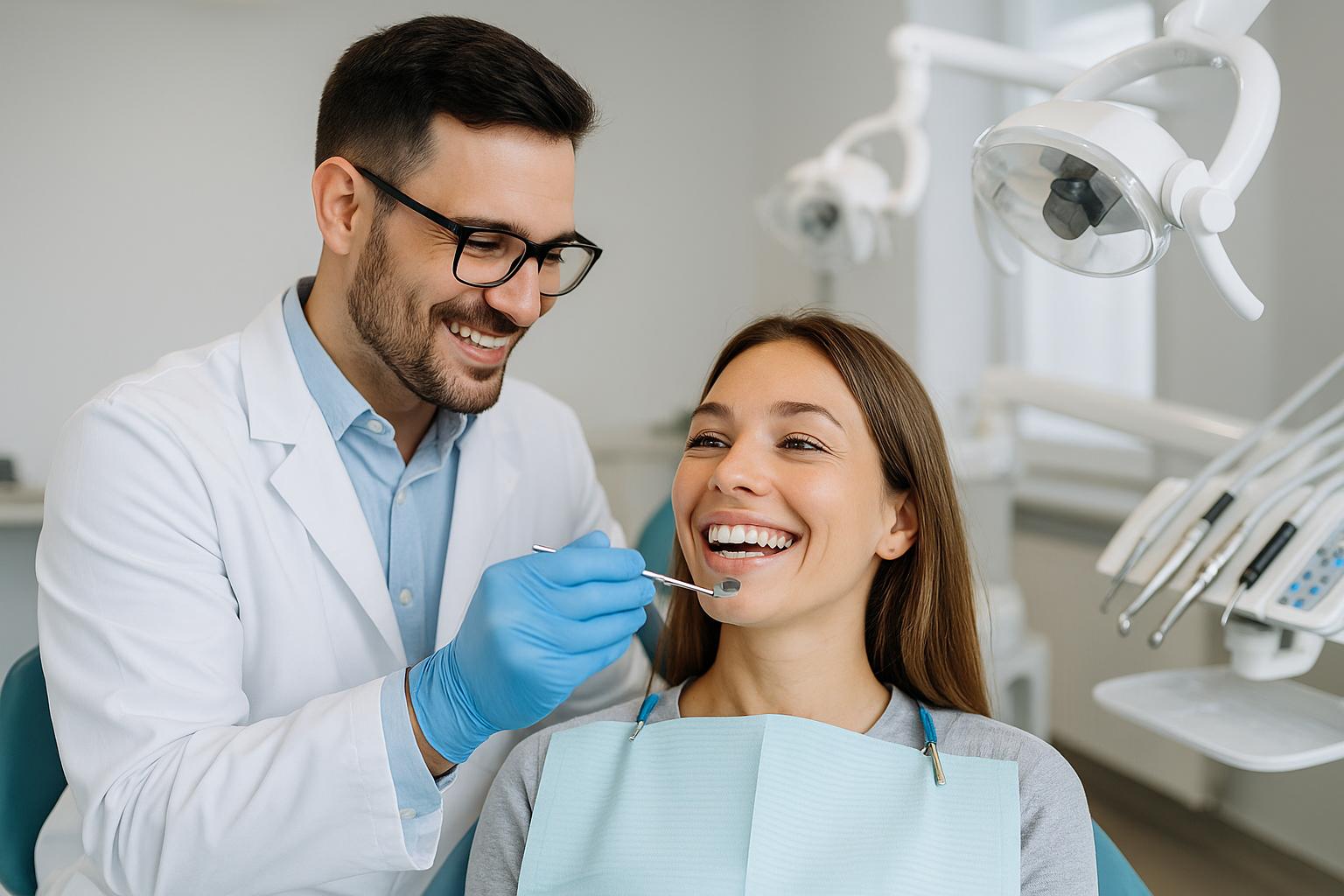The Essential Oral Health & Preventive Care Manual
Published
30 June 2025 | 22 min read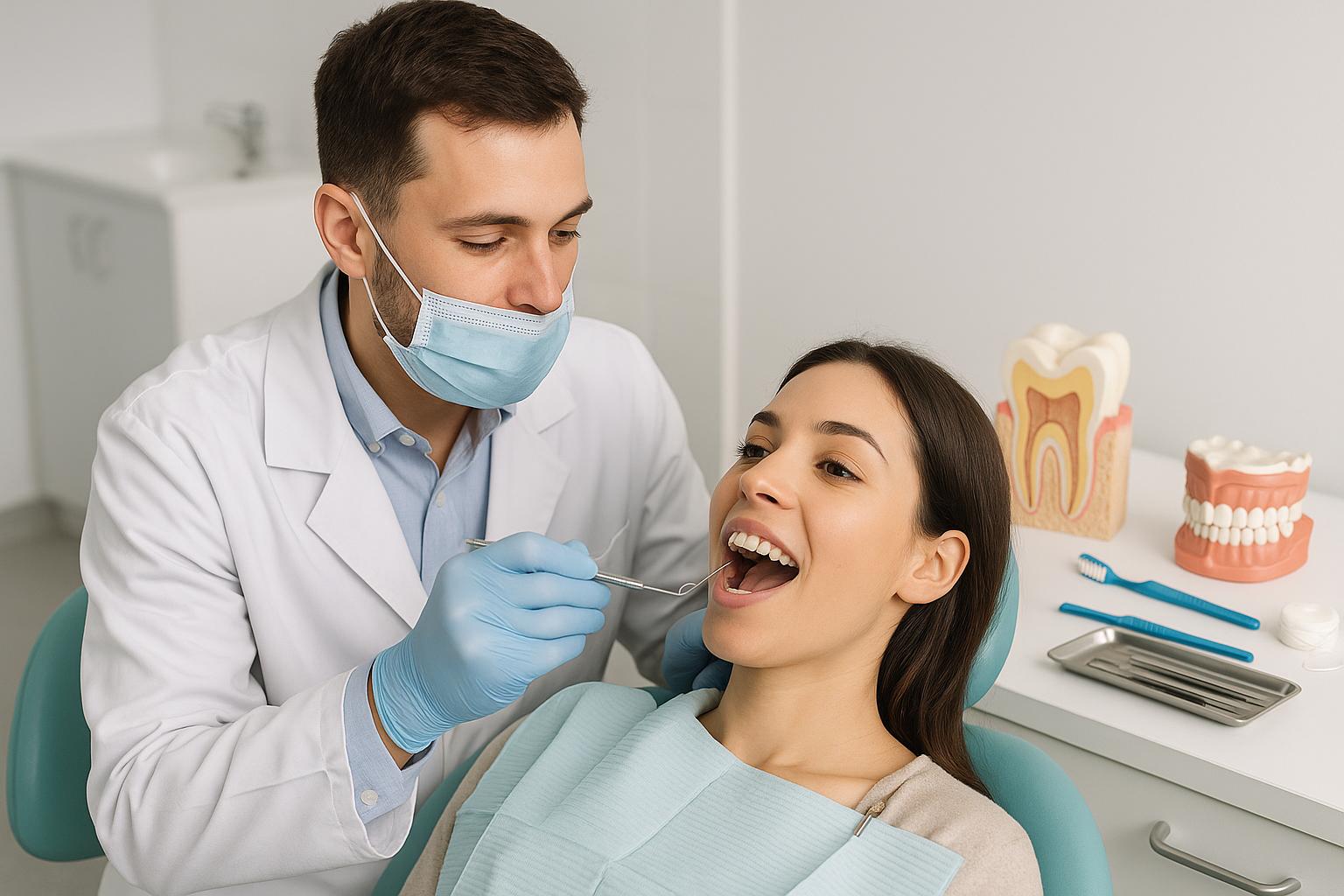
Published
30 June 2025 | 22 min readArticle Summary
Comprehensive Guide for Optimal Oral Health and Dental Wellbeing
Looking after our teeth and gums is vital for staying healthy. Many of us still have questions about the best ways to prevent tooth decay and gum disease.
This manual gives us clear, reliable guidance for building strong oral health habits and making informed choices about our daily care. We explore the science behind oral health and show how prevention can save us pain, money, and time at the dentist.
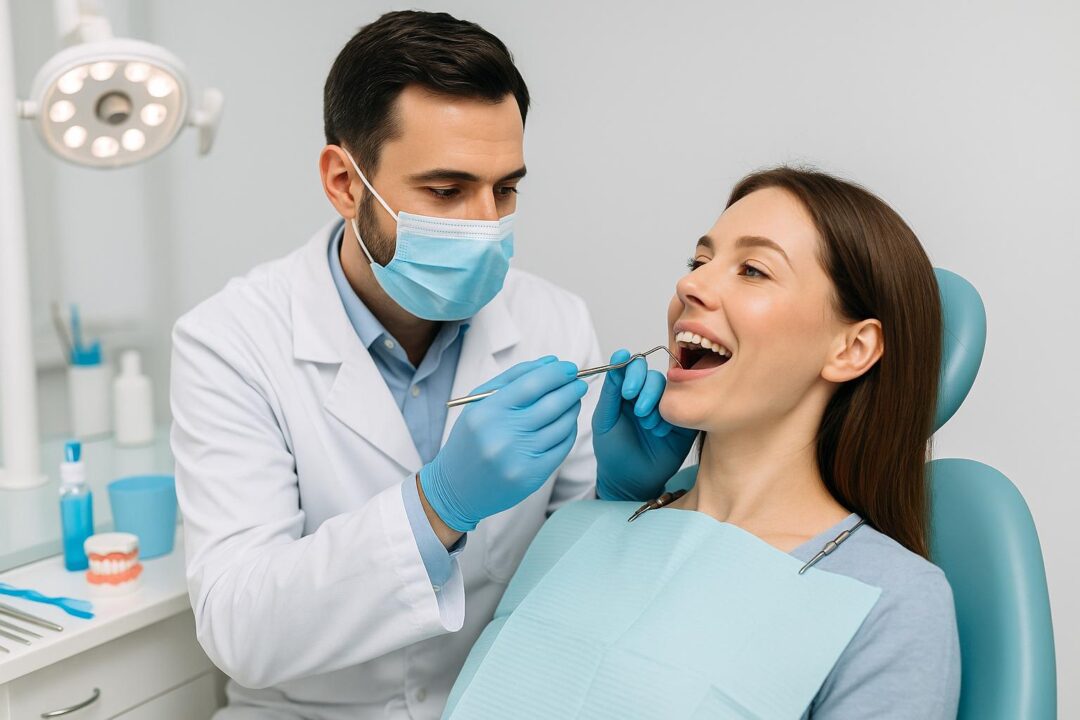
We all want confident smiles and healthy mouths at every age. That means understanding how factors like what we eat, our brushing routines, and even our overall health affect our teeth.
We take a close look at trusted strategies and practical routines backed by evidence and recommended by dental experts. Resources like those in Delivering Better Oral Health make a difference in our lives.
Key Takeaways
- Good oral health starts with simple daily routines.
- Preventive care helps us avoid common dental problems.
- Trusted guidance makes healthy habits easier for everyone.
Understanding Oral Health
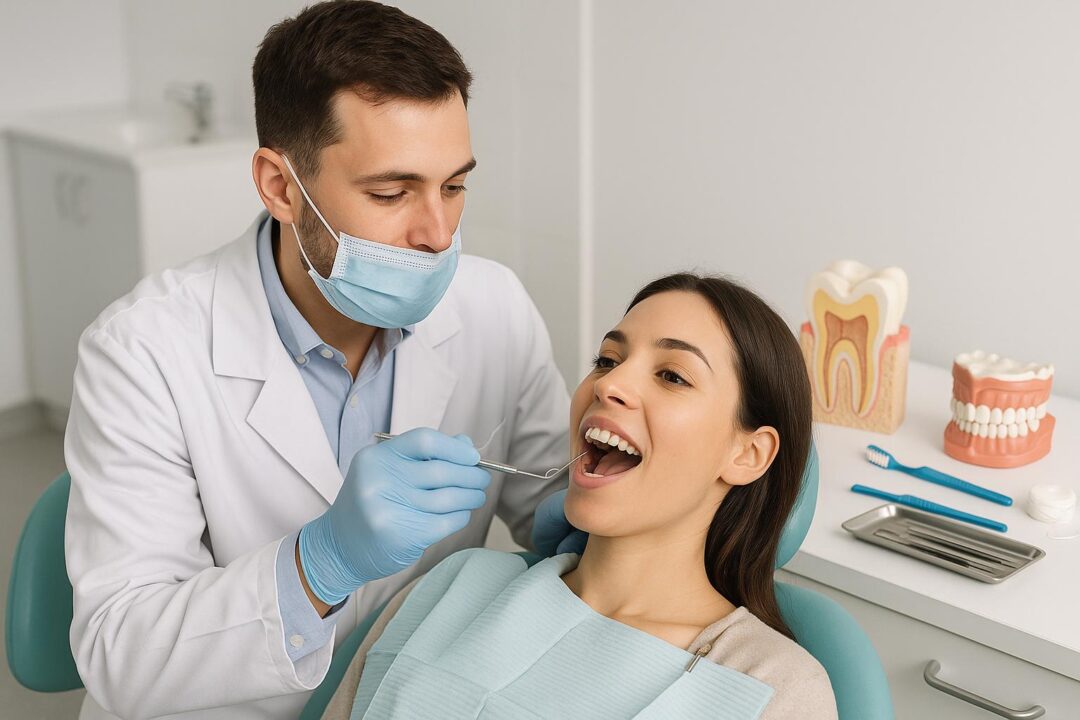
Oral health is part of our daily lives and impacts how we eat, speak, and feel. Problems with our mouths can affect many parts of the body and lead to more serious issues if left untreated.
What Is Oral Health
Oral health means more than just having clean teeth. It includes healthy gums, strong teeth, fresh breath, and a pain-free mouth.
We rely on oral health to chew, swallow, and speak without discomfort. Dental health also involves preventing problems like cavities, gum disease, and tooth wear.
Routine brushing, flossing, and regular dental check-ups are important. Professional advice, such as that found in the Delivering Better Oral Health toolkit, outlines ways to reduce the risk of diseases and keep our mouths healthy.
How Oral Health Affects General Well-Being
Our mouths are connected to many other systems in the body. Poor oral health increases the risk of infections, pain, and long-term conditions like heart disease or diabetes.
For example, gum disease can make other health problems worse, especially in older adults and people with weak immune systems. Missing or painful teeth can limit food choices, leading to poor nutrition and affecting energy levels.
Ongoing dental problems may also make people feel embarrassed, lowering their self-esteem or leading to social withdrawal. Good oral care supports our general health and mental well-being.
Daily habits, dental visits, and healthy diets help prevent both dental and wider health problems. Guidance such as NICE’s advice for care homes highlights the importance of support for those who need help maintaining their mouth care.
Key Oral Structures and Functions
The mouth is made of several key parts, each with an important job. These include:
| Structure | Main Function |
|---|---|
| Teeth | Cut, chew, and grind food |
| Gums | Support teeth, protect roots |
| Tongue | Help speak, taste, chew, and swallow |
| Salivary glands | Produce saliva for digestion and protection |
| Jawbones | Anchor teeth, allow biting and chewing |
Healthy teeth let us bite and chew food safely. Gums hold teeth in place and shield sensitive areas.
Our tongues help us taste, talk, and move food while eating. Saliva keeps our mouths moist, fights germs, and helps digest food.
Jawbones keep our mouths strong and stable. When these parts work well together, we can eat, speak, and smile with ease.
If any structure becomes damaged, it can affect our daily comfort and overall health.
The Importance of Preventive Care
Taking care of our oral health early and often can save us from pain, expensive treatments, and long-term health issues. Building good daily habits and visiting the dentist regularly is an investment in our well-being.
Benefits of Preventive Oral Care
Preventive oral care helps us keep our teeth and gums healthy for life. Brushing twice a day, flossing, and using fluoride toothpaste are simple steps that stop problems before they start.
Regular professional cleanings help remove plaque and tartar that we cannot reach with brushing alone. Early check-ups let our dentist spot small issues, like tiny cavities or the early stages of gum disease.
Fixing these problems early means less discomfort, lower costs, and better results. Skipping preventive care often leads to bigger dental problems that are costly and harder to treat later.
Preventive care also supports better overall health, since poor oral hygiene has been linked to heart disease and diabetes. By protecting our teeth and gums, we help protect our bodies as well.
Role of Disease Prevention
One of the main goals of preventive care is disease prevention. Gum disease and tooth decay are two of the most common health issues worldwide.
With daily care and regular dentist visits, we can stop most oral diseases from starting or getting worse. Dentists often use check-ups to look for warning signs that we might not notice ourselves, such as bleeding gums or small cracks.
They can give guidance on improving our habits or suggest treatments before problems turn serious. Vaccinations and sealants, as recommended for children, are other tools in stopping disease before it starts.
Keeping up with preventive care means less pain, fewer infections, and a smaller chance of needing emergency dental work.
How Prevention Improves Quality of Life
Good oral health affects how we eat, speak, and feel about ourselves. When we practise preventive care, we are less likely to suffer from toothaches, infections, or bad breath.
A healthy smile boosts our confidence and helps us socialise without worry. Children benefit at school by missing fewer days due to dental pain.
Adults are more comfortable in personal and work situations when oral health issues are not a distraction. By investing in preventive care, we also lower our long-term dental costs.
Preventive measures are almost always less expensive than treatments for advanced disease. Our efforts today help us stay healthy, comfortable, and confident in the years to come.
Oral Hygiene Best Practices
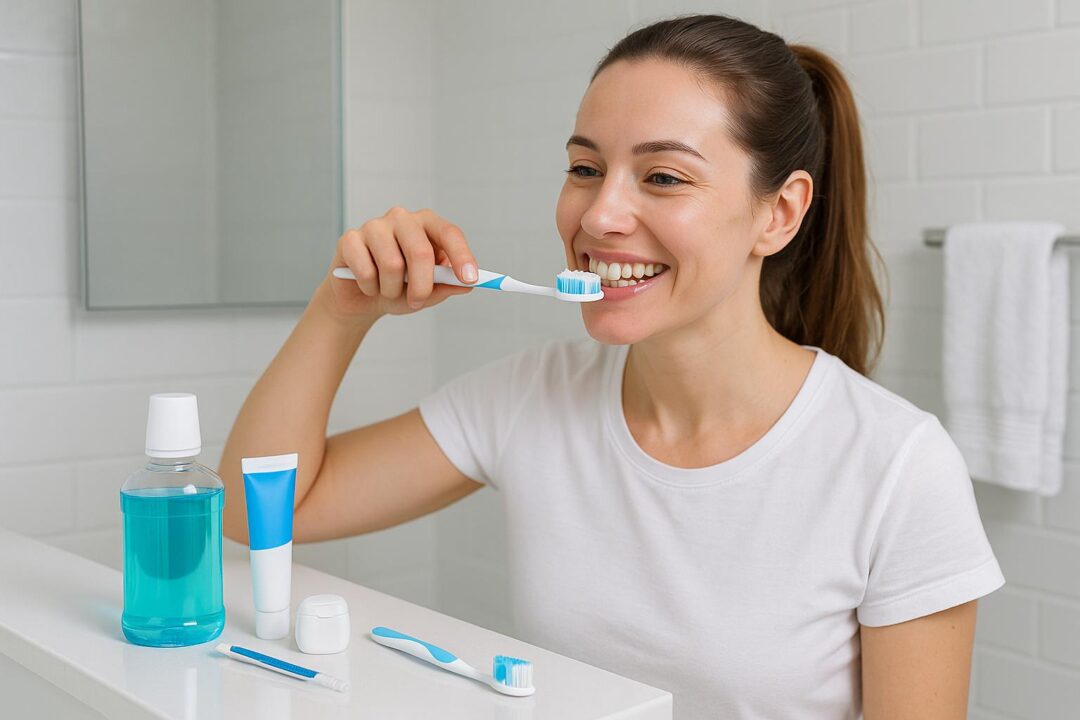
To protect our teeth and gums, we need to use methods that target plaque, prevent cavities, and support healthy gums. Using the right tools and techniques for brushing, flossing, and rinsing helps reduce the risk of dental and gum problems.
Proper Brushing Techniques
We should brush our teeth twice a day for two minutes using a soft-bristled toothbrush and fluoride toothpaste. Holding the brush at a 45-degree angle to the gum line lets us clean both teeth and gums at once.
Short, gentle strokes help remove food and plaque without harming enamel or gum tissue. Brushing the inside, outside, and chewing surfaces of each tooth is important.
We should not forget to gently brush our tongues to remove bacteria and keep our breath fresh. Replacing our toothbrush every three months, or sooner if the bristles are frayed, keeps our brushing effective.
Toothbrushing is a widely recommended habit for preventing decay and protecting oral health, as emphasised in official dental guidance.
Key tips for brushing:
- Use fluoride toothpaste.
- Brush gently and thoroughly.
- Do not rinse with water after brushing; spit out excess toothpaste to keep fluoride on teeth longer.
The Role of Electric Toothbrushes
Electric toothbrushes can help us brush more thoroughly than many manual brushes. Their rotating or vibrating heads are designed to remove plaque efficiently, especially for people who find manual brushing difficult—such as children or those with limited mobility.
Most electric brushes have timers to help us brush for the full two minutes. Pressure sensors can also prevent us from brushing too hard and harming our gums.
Many studies suggest electric toothbrushes reduce plaque and gingivitis better over time, especially if used correctly and paired with fluoride toothpaste.
Comparing manual & electric toothbrushes:
| Feature | Manual | Electric |
|---|---|---|
| Plaque Removal | Good, needs technique | Often more effective |
| Built-in Timer | No | Yes (in most models) |
| Ease of Use | Easy | Very easy |
| Pressure Sensor | No | Yes (in many models) |
Choosing an electric toothbrush can make our daily routine simpler and more effective.
Effective Flossing Methods
Flossing removes food particles and plaque from areas our toothbrushes cannot reach, especially between the teeth and under the gum line. We should floss once daily, gently curving the floss around each tooth in a “C” shape.
To avoid hurting our gums, we need to use a clean section of floss for each gap and move it up and down carefully against the side of each tooth. Flossing also helps stop gum disease before it starts and keeps our breath smelling fresh.
There are different tools we can use, such as waxed floss, unwaxed floss, or dental tape. For those who struggle with traditional floss, interdental brushes or water flossers might be useful alternatives.
We should make sure to clean every space between teeth—not just the front ones.
Selecting the Right Mouthwash
Our choice of mouthwash depends on our oral health needs. Fluoride mouthwashes help strengthen tooth enamel and protect against cavities.
Antibacterial or antimicrobial mouthwashes are useful to control plaque and reduce gum problems. We should avoid mouthwashes that contain alcohol if we have sensitive mouths or dry mouth.
It is best to use mouthwash at a different time than brushing, so we do not rinse away the fluoride from our toothpaste. Some products offer extra benefits like freshening breath or helping with sensitivity.
Choosing the correct mouthwash supports our oral hygiene goals and completes our daily cleaning routine. For more guidance, see detailed advice on oral hygiene practices.
Fluoride And Its Role In Oral Health
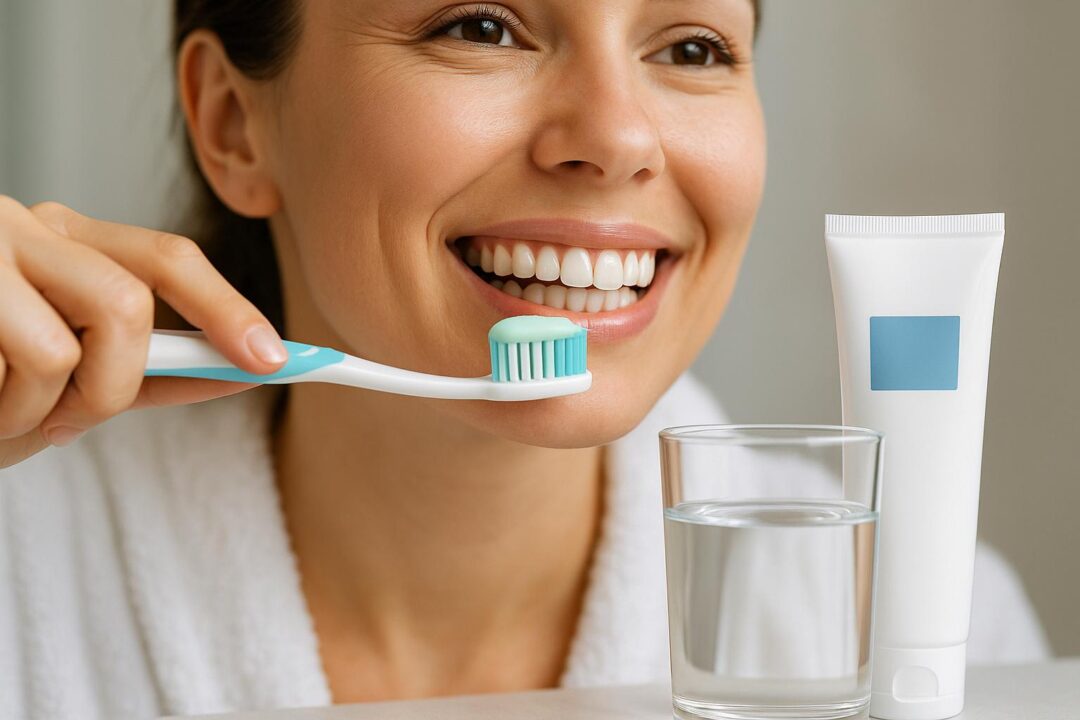
Fluoride is a key mineral that helps us prevent tooth decay and maintain strong, healthy teeth. By using fluoride products and accessing fluoridated water, we can lower our risk of dental caries and reduce future dental costs.
Benefits Of Fluoride
Fluoride strengthens the enamel on our teeth, making it harder for acids from food and bacteria to cause cavities.
It can help repair early stages of tooth decay even before they form a cavity, a process known as remineralisation.
Studies have shown that communities with access to fluoride in water or dental products experience lower rates of dental caries.
Using fluoride reduces the need for expensive dental treatments and supports long-term oral health for both children and adults.
Fluoride is not just for children.
Adults benefit too, especially those at higher risk of tooth decay due to diet, dry mouth, or gum disease.
Regular access to fluoride helps us keep our teeth healthier for longer.
Sources Of Fluoride
There are two main ways we receive fluoride: systemic and topical.
Systemic fluoride is present in water supplies and some foods, entering our bodies through digestion.
Topical fluoride is found in products we put directly on our teeth, such as toothpastes and mouth rinses.
The most common source is community water fluoridation, which provides a low, safe level of fluoride to everyone using the local supply.
Other sources include fluoride gels, varnishes, and supplements prescribed by dental professionals.
We should also be aware of the fluoride concentration in tap water.
Using both fluoridated water and topical products has been proven to be the most effective strategy to prevent tooth decay and maintain healthy teeth.
Understanding Fluoride Toothpaste
Using fluoride toothpaste is a simple and effective way for us to protect our teeth every day.
Almost all toothpaste bought in shops contains fluoride, but the concentration varies between brands and formulations.
For most adults and children over six, brushing twice daily with toothpaste containing 1350–1500 parts per million (ppm) fluoride is recommended.
Children under six may need a lower-fluoride toothpaste depending on their risk of dental caries, so we should always check the label and follow our dentist’s advice.
Brushing technique also matters.
We should avoid rinsing with lots of water after brushing, as this can wash away the beneficial fluoride left on the enamel.
Choosing the right fluoride toothpaste and using it correctly can significantly reduce the chance of tooth decay.
Nutrition and Oral Health

Our daily diet plays a direct role in our dental health.
The food choices we make affect our teeth, gums, and overall well-being.
Good nutrition helps prevent cavities, gum disease, and other oral issues.
Balanced Diet For Healthy Teeth
A balanced diet gives our bodies the nutrients needed to keep teeth and gums strong.
Calcium, found in milk, cheese, and yoghurt, helps build healthy tooth enamel.
Phosphorus in eggs, fish, and lean meat also helps repair and rebuild tooth enamel.
Vitamin C supports gum health, reducing the risk of bleeding and inflammation.
Oranges, berries, and leafy greens are good sources.
Drinking water instead of soft drinks helps rinse away food particles and keeps our mouths hydrated.
Regular meals with fruits, vegetables, lean proteins, and whole grains set a strong foundation for our oral health.
According to recent findings, a diet rich in essential nutrients supports not only dental wellness but also contributes to better oral hygiene outcomes.
Impact Of Sugar On Dental Health
Eating or drinking foods high in sugar increases our risk for cavities.
Sugar mixes with bacteria in our mouths to form acid.
This acid attacks the enamel, causing tooth decay.
Sticky sweets like caramel and toffee cling to teeth, exposing them to acid for longer periods.
Even sugary drinks such as flavoured water and fizzy drinks harm enamel.
Chewing sugar-free gum can help increase saliva and reduce acid levels, but it does not replace brushing and flossing.
We should try to limit how often we consume sugary snacks and drinks.
Saving sweet foods for mealtimes lowers the chance of tooth decay.
Public health guidelines stress the importance of reducing sugar for better long-term oral health.
Foods That Support Oral Wellness
Certain foods help maintain a healthy mouth.
Crunchy vegetables like carrots and celery help scrub teeth surfaces and increase saliva production, which washes away bacteria.
Cheese and yoghurt give us calcium and protein, both important for strong teeth and bones.
Whole grains and seeds provide minerals that protect tooth enamel.
Fresh fruit, such as apples and pears, can gently clean the teeth as we eat.
Drinking plenty of water throughout the day helps rinse away food debris and bacteria.
Choosing these foods regularly can improve the strength of our teeth and gums.
Focusing on nutrient-rich choices in our daily diet encourages better oral wellness and overall well-being.
Risk Factors Affecting Oral Health

Several choices and health conditions can make our mouths more at risk for problems.
Addressing these factors can help us prevent diseases like gum disease, tooth decay, and even some types of cancer.
Smoking And Tobacco Use
Smoking and all forms of tobacco use harm our oral health.
Cigarettes, cigars, chewing tobacco, and even vaping can stain teeth and lead to bad breath.
More seriously, these habits increase the risk of gum disease and tooth loss.
Tobacco also makes us more likely to develop mouth cancer.
It lowers the body’s ability to fight infection, leading to slower healing in the mouth.
Smokers face greater challenges with dental treatment outcomes compared to non-smokers.
Nicotine in tobacco narrows blood vessels, reducing blood flow to the gums.
This makes infections harder to detect and treat.
People who quit smoking will see clear benefits and lower the risk of future oral health problems.
For more details on the impact of tobacco, please visit this government oral health toolkit.
Alcohol Consumption And Oral Health
Consuming high amounts of alcohol can have damaging effects on our mouths.
Alcohol misuse dries out the mouth, lowering saliva levels.
This leads to more tooth decay as saliva helps to protect and clean teeth.
Mixing alcohol with tobacco greatly increases the chance of developing cancers in the mouth, throat, and oesophagus.
Alcoholic beverages, especially those with high sugar or acid content, can erode tooth enamel.
Long-term heavy drinking increases the risk of gum disease because it can affect how well we absorb nutrients our bodies need for healthy gums.
Even moderate drinkers should be aware of these risks.
To understand the common risk factors, see this World Health Organization resource.
Underlying Medical Conditions
Health problems like diabetes and cardiovascular diseases can impact our oral health.
Diabetes, in particular, raises the risk of gum disease and slows down healing after dental procedures.
Poorly managed diabetes can raise blood sugar levels in saliva, feeding harmful bacteria.
This can worsen infections and increase tooth loss.
Some heart conditions are linked to tooth and gum infections, making routine dental care even more important.
Systemic diseases, long-term illnesses, and health inequalities can also affect access to dental care and lead to delayed treatment.
Regular check-ups and working with our GPs and dentists help us manage these conditions and reduce risks.
For more information on how medical conditions impact oral health, visit this detailed guideline.
Common Oral Diseases And Disorders
Many oral diseases start quietly but can lead to pain, discomfort, and serious health problems.
Early detection and prevention are key for maintaining healthy teeth, gums, and tissues.
Dental Caries And Cavities
Dental caries, often called tooth decay, is one of the most common oral diseases worldwide.
It happens when bacteria in our mouths turn sugars from food into acids.
These acids attack the tooth enamel, causing tiny holes called cavities.
Early signs include white spots or small brown patches on teeth.
If ignored, decay can reach deeper layers, leading to pain or even tooth loss.
Children and teens are especially at risk, but adults are also affected.
Preventing dental caries means brushing twice a day with fluoride toothpaste, limiting sugary foods, and visiting our dentist regularly.
Tooth decay and cavities are preventable with the right habits and early action.
Gum Disease And Its Stages
Gum disease, or periodontal disease, affects the tissues holding our teeth in place.
The two main stages are gingivitis and periodontitis.
- Gingivitis involves red, swollen gums that may bleed during brushing or flossing. It is usually reversible with good oral hygiene.
- Periodontitis is more severe. Gums pull away from the teeth, bone can be lost, and teeth may loosen or fall out.
Common causes include poor brushing, smoking, diabetes, and certain medications.
Regular dental check-ups and proper cleaning routines are crucial for prevention.
Treating gum disease early helps avoid pain and long-term complications.
Learn more about gum disease and oral conditions.
Oral Cancer Detection and Risks
Oral cancer most often affects the lips, tongue, cheeks, and throat.
Warning signs can include sores that don’t heal, lumps, and unexplained bleeding or numbness.
Risk factors include smoking, heavy alcohol use, and human papillomavirus (HPV) infection.
Sun exposure can increase the risk of lip cancer.
Regular oral screenings help catch cancer early.
Dentists are trained to spot unusual changes in the mouth.
We should report any persistent changes or pain to our dentist.
Understanding oral cancer and its risks is important for protecting our health.
Developing Healthy Oral Behaviours
We can build and maintain good oral health by focusing on daily habits, effective strategies, and the link between oral care and self-worth.
With the right approach, we reduce the risks of poor oral health and its impact on our overall well-being and relationships.
Encouraging Positive Habits
Brushing our teeth twice a day with fluoride toothpaste helps prevent tooth decay and gum disease.
Using dental floss or interdental brushes removes plaque and food from hard-to-reach places between teeth.
It is important to limit sugary snacks and drinks, especially between meals.
By choosing water or milk instead of soft drinks, we can protect our teeth from acid and sugar damage.
Regular dental check-ups allow us to catch problems early.
Dental professionals can give us advice on oral hygiene, diet, and ways to strengthen our cleaning routines.
These healthy habits prevent common dental issues and support our daily comfort and confidence.
| Daily Habit | Recommended Frequency |
|---|---|
| Brushing | Twice a day |
| Flossing/Interdental Cleaning | Once a day |
| Dental Check-up | Every 6-12 months |
| Reducing Sugary Intake | As often as possible |
Behaviour Change Strategies
Changing our behaviour can be challenging, but using proven strategies makes it easier. Setting clear, specific goals—like brushing for two minutes each morning and night—helps us develop consistency.
Visual reminders in the bathroom or setting alarms support habit formation. Tracking our progress, such as marking a calendar, reinforces positive behaviour.
Family members can support each other by turning oral care into a shared routine. This makes it less likely anyone will skip brushing or flossing.
Dental professionals provide us with clear advice and motivational interviewing techniques. Following guidance from the evidence-based toolkit for prevention, personalised advice matches our needs and challenges.
Improving Self-Esteem Through Oral Care
Oral health affects how we feel about ourselves and how we interact with others. Clean, healthy teeth make us feel more confident and willing to smile, which can lead to stronger relationships and better social interactions.
Poor oral health may cause discomfort, embarrassment, or even avoidance of social situations. Taking care of our teeth boosts not just our appearance, but also our self-image and well-being.
Encouragement from dental professionals and success in keeping up healthy routines help us feel proud of our efforts and results.
The Role of Dental Teams and Health Professionals
We depend on skilled dental teams and health professionals to keep our teeth and gums healthy. Their work focuses on prevention, early detection, and practical advice for daily care.

Regular Dental Check-Ups
Regular dental check-ups allow us to catch dental problems early. Dentists and dental hygienists look for tooth decay, gum disease, and signs of oral cancer.
These checks mean we can treat issues before they become painful or costly. Routine appointments usually include professional cleaning, also called scaling and polishing.
Hygienists remove plaque and tartar that brushing at home cannot. This helps prevent gum disease and keeps our breath fresh.
Dental professionals also share advice about our diet, brushing, and flossing habits. They may use dental x-rays to spot issues below the surface, like bone loss or hidden cavities.
Many check-ups finish with fluoride treatments or sealants for added protection. By visiting the dentist every 6–12 months, we keep our mouths healthy and lower the risk of problems that can affect our whole body.
The Oral Health Foundation explains that preventive care is a key part of what dental hygienists do.
Collaborating With Dental Teams
Dental care is not just the role of one person. Dentists, dental therapists, hygienists, nurses, and even reception staff work together as a team to support us.
Dental teams use a “skill mix” approach in which each professional focuses on the areas where they are most trained. For example, dental hygienists focus on gum health and preventive treatments, while dentists handle complex procedures like fillings and crowns.
Therapists can provide some types of treatments without a dentist being present, making care more accessible. NHS guidance encourages the best use of every team member’s skills for patient benefit, as seen in this NHS skill-mix policy.
Collaboration leads to:
- More efficient use of time in the dental practice
- Faster and more flexible appointments
- Improved care for patients with specific needs
Working together helps dental teams offer tailored advice and create personalised care plans.
Frequently Asked Questions
We address common topics on preventive oral health care, highlighting the latest evidence-based practices, referencing methods, new updates, essential dental services, advances in paediatric care, and significant guideline changes.
This section is tailored for professionals, students, and anyone looking to keep up with current oral health standards.
What are the core recommendations in the latest evidence-based toolkit for oral health prevention?
The toolkit, such as the one detailed in “Delivering Better Oral Health,” focuses on reducing sugar intake, using fluoride toothpaste, and regular dental check-ups. It also places emphasis on quitting tobacco, minimising alcohol consumption, and giving clear advice on daily oral hygiene routines.
Education for both patients and carers is considered essential. Equity in oral health care access is also a major focus, ensuring everyone receives suitable information and support.
Read more about these evidence-based toolkits.
How can one effectively reference the updated oral health preventive care manual in academic work?
When referencing the manual, we recommend using a recognised academic citation style such as Harvard or APA. It is important to include the correct title, edition, date, and publisher.
Online versions should also have the relevant web address with the date accessed. Check the manual’s front matter or website for the recommended citation format to avoid errors.
What new insights does the latest edition provide in comparison to previous versions?
The newest manual updates reflect current research and recent clinical data. There is now a greater focus on personalised prevention plans and adapting care for specific risk groups, such as the elderly or pregnant women.
New topics include digital tools for tracking oral hygiene and more guidance around managing chronic dental diseases. Some changes result from national and global oral health strategies.
Which preventive dental services are considered pivotal in the recent oral health manual?
The manual identifies services such as regular scale and polish, application of fluoride varnishes, and dental sealants for children as crucial. Routine assessments for gum disease and oral cancers are also prioritised.
Programmes aimed at early education in schools and community dental visits are highlighted as impactful preventive measures.
How has the approach to paediatric oral health care evolved in the current edition?
New approaches include more comprehensive risk assessments conducted early in life. There is tailored preventive advice for families and updated fluoride guidelines suitable for different age groups.
We also see an emphasis on parental engagement, making sure carers understand the importance of establishing healthy habits early.
Can you summarise the fundamental changes introduced in the latest oral health prevention guidelines?
The guidelines have added clarity about frequency and methods for professional cleaning. Home hygiene routines and dietary recommendations are also addressed.
Advice is now tailored based on patient risk rather than a one-size-fits-all approach. There is stronger guidance on equity, promoting access for underserved groups.
Regular reviews of patient care plans are encouraged to address any changes in needs or health status. More details can be found in recent national oral health guidance.

